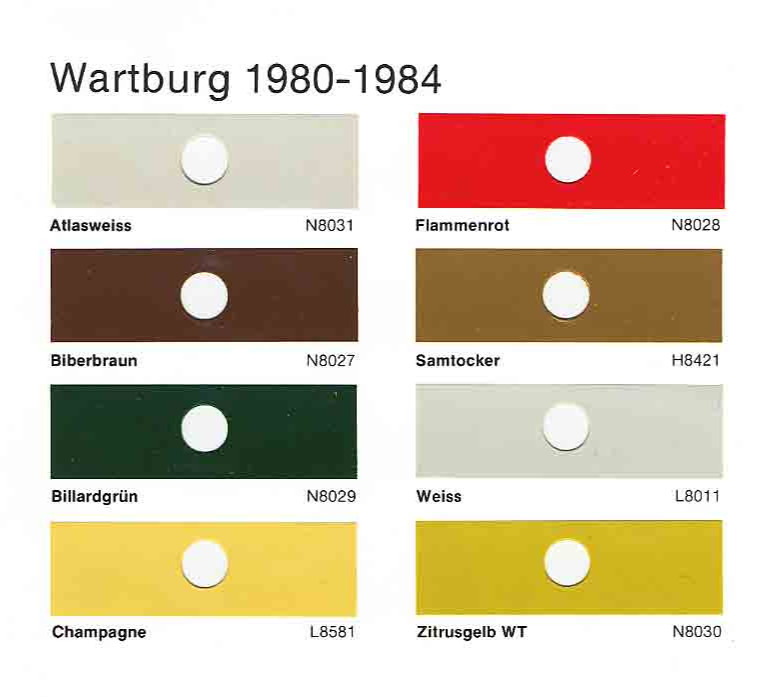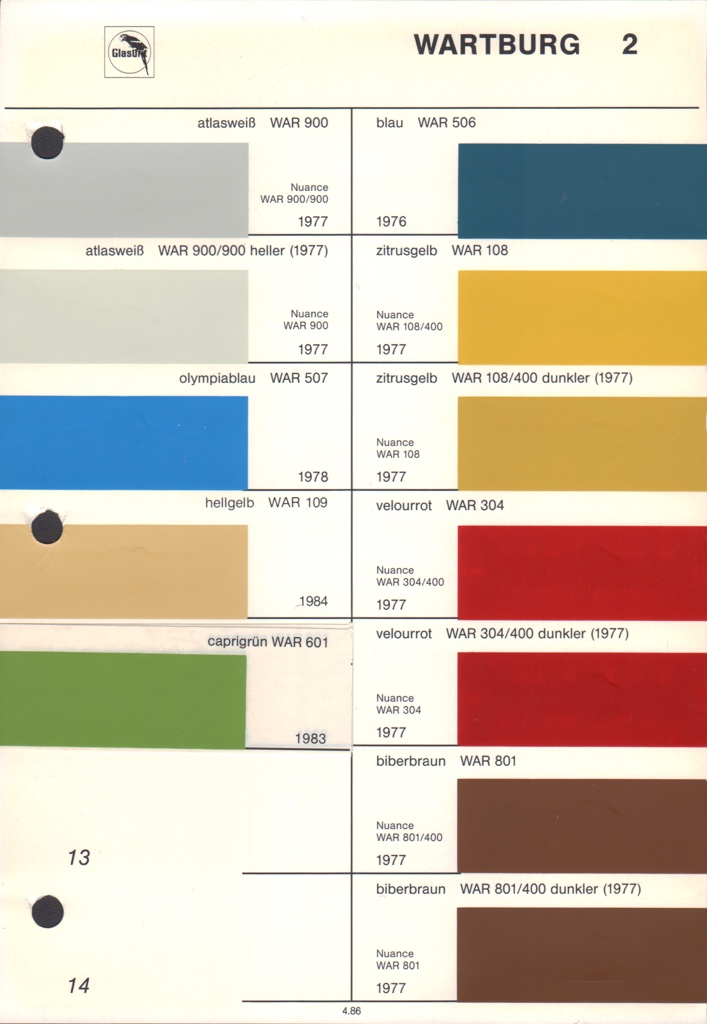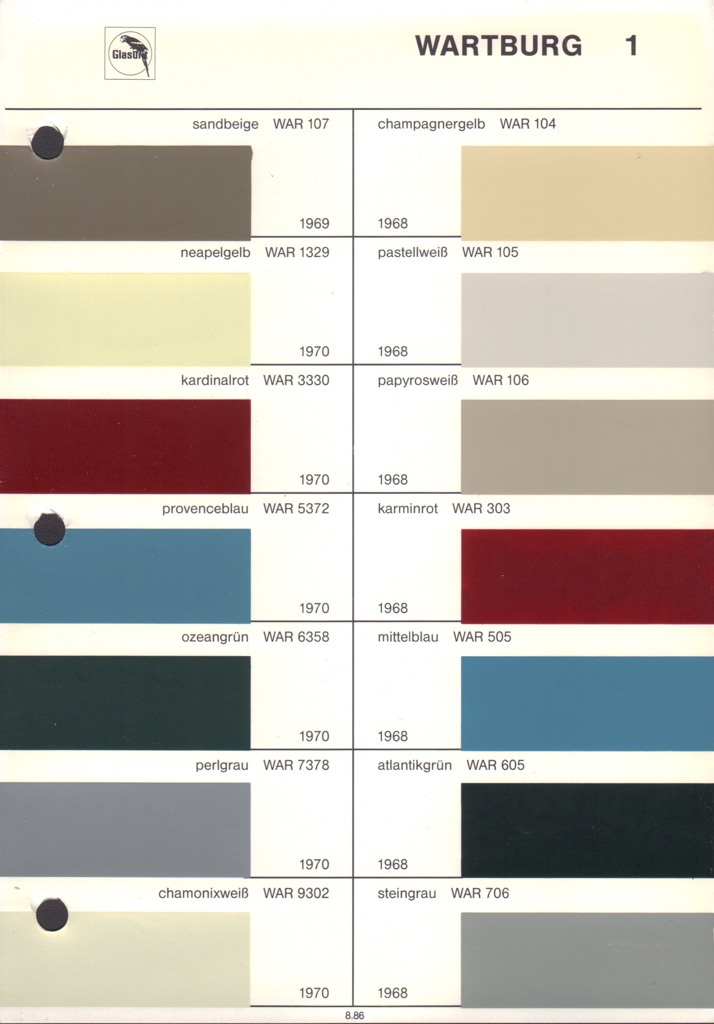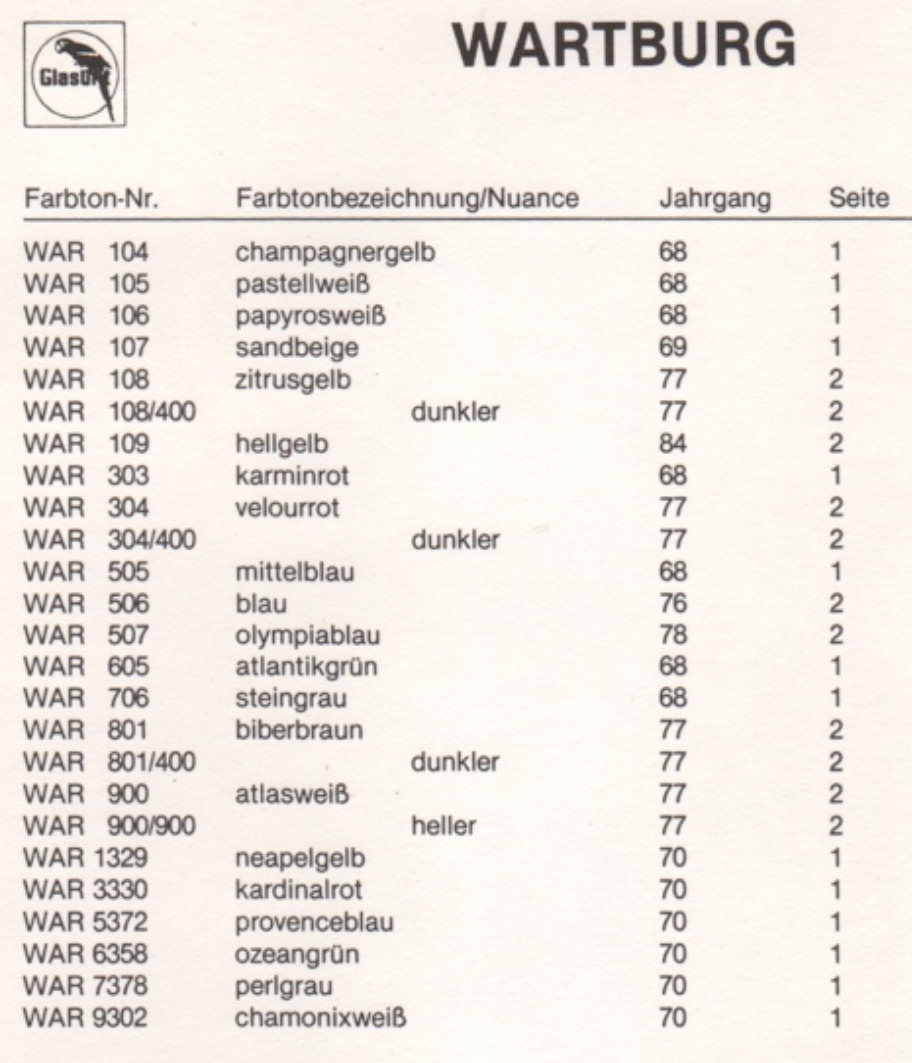
Wartburg Digital Color Library and Database
Wartburg was a car manufacturer based in East Germany, known for producing a range of automobiles that were popular in the Eastern Bloc during the Cold War era. The company derived its name from the Wartburg Castle, located near the factory in Eisenach, Thuringia.
Key aspects of Wartburg's history include:
Origins and Early History: The origins of Wartburg cars can be traced back to the Eisenach automobile plant, which had a history of car manufacturing dating back to the early 20th century, including the production of BMW vehicles before World War II. After the war, the factory found itself in the Soviet occupation zone, which later became East Germany (GDR).
Production under State Ownership: In the GDR, the factory was nationalized and began producing cars under the Wartburg name in the late 1950s. The vehicles were designed to be affordable and practical for use in the Eastern Bloc countries, where access to personal transportation was more limited compared to Western Europe.
Notable Models: One of the most well-known Wartburg models was the Wartburg 353, introduced in the 1960s. This model, also known as the "Knight," was exported to several countries, including the UK. The cars were known for their simple, durable design, and the use of a two-stroke engine, which was somewhat unusual for a passenger car.
Engineering and Design: Wartburg cars were generally characterized by their basic engineering and utilitarian design. The use of two-stroke engines was a distinctive feature, though it became a drawback in terms of fuel efficiency and emissions as automotive technology advanced.
Decline and End of Production: After the fall of the Berlin Wall and the reunification of Germany, Wartburg, like many East German industries, struggled to compete with more modern and efficient Western competitors. The last Wartburg rolled off the production line in 1991, marking the end of the brand.
Legacy: Today, Wartburg cars are remembered as a part of East German history and automotive heritage. They are often associated with the era of the GDR and are considered collector's items by enthusiasts interested in this period of history.
Wartburg's story is reflective of the automotive industry in the Eastern Bloc, where cars were designed for functionality and affordability under the constraints of a centrally planned economy. Despite their limitations, Wartburg cars were an important part of everyday life for many people in East Germany and other Eastern Bloc countries.
1980 - 1984

1976 - 1984

1968 - 1970

1968 - 1977
